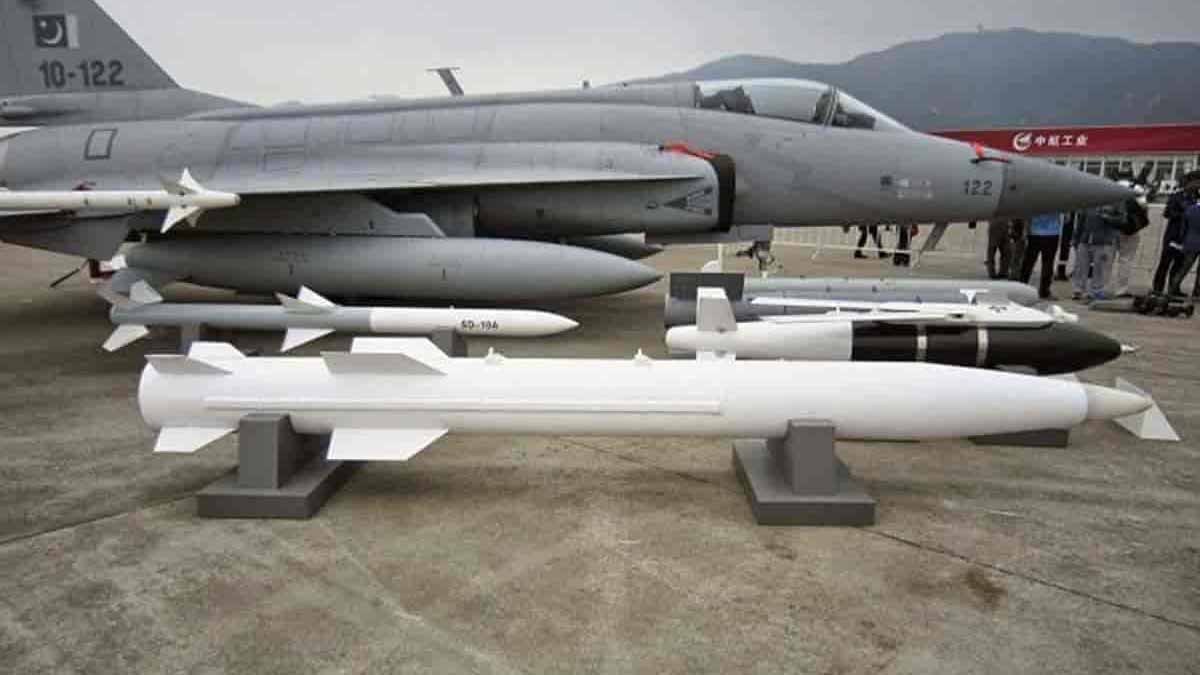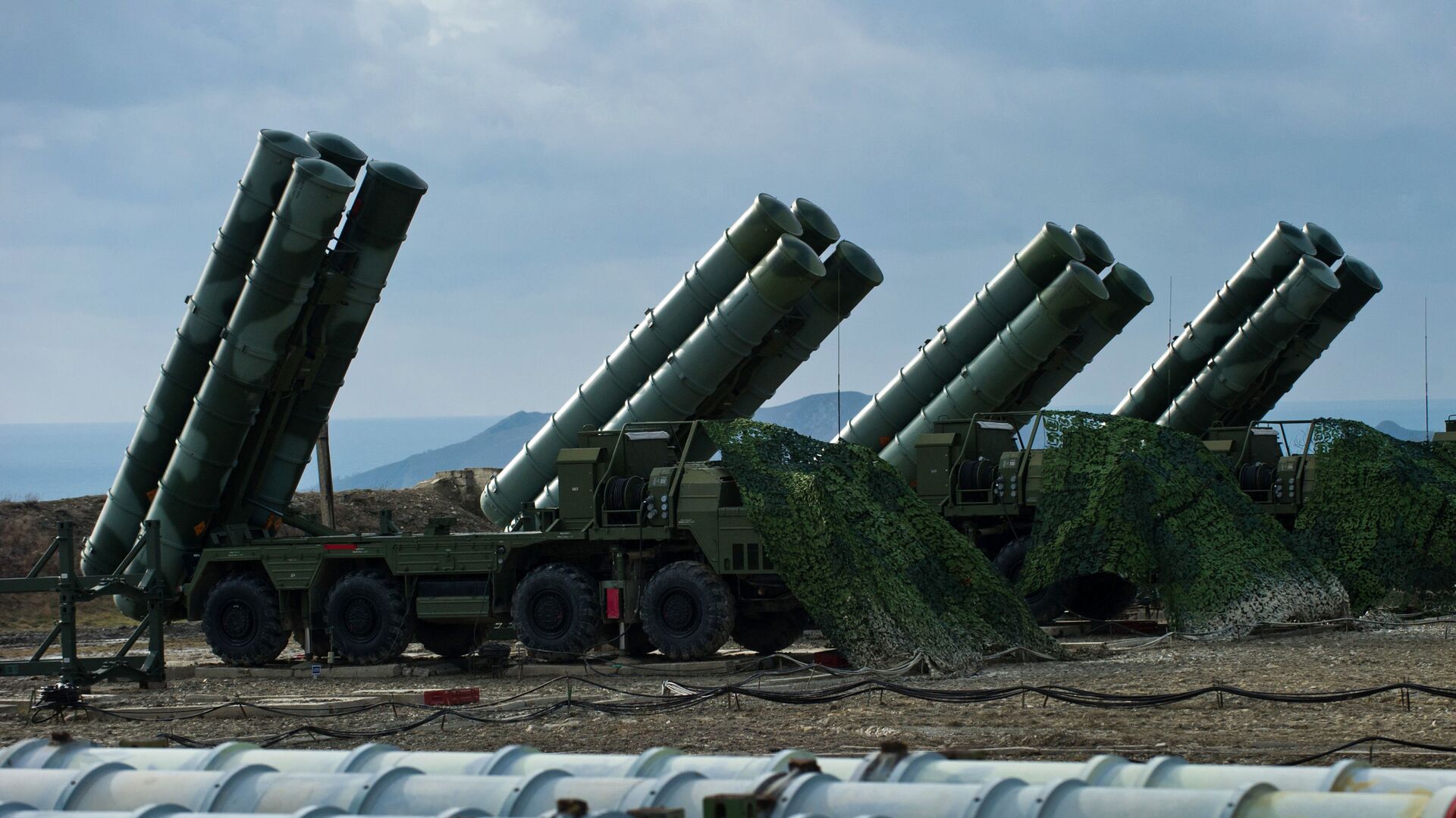(VIDEO) First Strike in the Hypersonic Era: Pakistan Claims JF-17-Launched CM-400AKG Took Out India’s S-400
Footage released by Pakistani authorities on Saturday depicts a JF-17 “Thunder” multirole fighter—co-produced by Pakistan Aeronautical Complex (PAC) and China’s Chengdu Aircraft Corporation (CAC)—armed with two CM-400AKG missiles, long speculated to be in Pakistan’s arsenal but never before publicly confirmed.
(DEFENCE SECURITY ASIA) – In what could mark a paradigm shift in South Asia’s strategic equilibrium, Pakistan’s Air Force is reported to have employed a Chinese-supplied hypersonic missile, the CM-400AKG, in a precision airstrike that allegedly neutralised India’s prized S-400 “Triumf” air defence system near the border.
Footage released by Pakistani authorities on Saturday depicts a JF-17 “Thunder” multirole fighter—co-produced by Pakistan Aeronautical Complex (PAC) and China’s Chengdu Aircraft Corporation (CAC)—armed with two CM-400AKG missiles, long speculated to be in Pakistan’s arsenal but never before publicly confirmed.
This release is being widely interpreted by defence analysts as a calculated act of strategic messaging, signaling the operational integration of hypersonic-class munitions into Pakistan’s frontline strike platforms.
In a statement issued the same day, the Pakistani military claimed it had successfully destroyed an Indian S-400 battery located at Adampur Air Force Station in Jalandhar district, Punjab, using precision-guided hypersonic missiles launched from a JF-17 platform.
According to Pakistan’s Inter-Services Public Relations (ISPR), the attack employed high-speed, high-precision munitions capable of defeating advanced air defence systems, including those with layered detection and intercept capabilities like the S-400.
The S-400 “Triumf”—developed by Russia’s Almaz-Antey and exported to India under a $5.43 billion contract signed in 2018—has long been considered one of the most formidable surface-to-air missile systems in the world, offering multi-layered defence against a variety of aerial threats.
India’s first S-400 systems were delivered in December 2021, with Adampur listed among the initial deployment locations due to its proximity to Pakistan’s eastern frontier and its strategic role in shielding northern airspace.
Video Player
00:00
00:00
Additional S-400 units are believed to have been stationed along India’s northeastern frontier, particularly in regions like Arunachal Pradesh and Doklam, aimed at deterring Chinese incursions, while further batteries are reportedly positioned near New Delhi and in the southern theatre to provide comprehensive nationwide air cover.
Military experts quoted by China’s Xinhua news agency noted that the destruction of an operational S-400 battery—if confirmed—would represent a severe blow to India’s layered air defence architecture and could dramatically shift tactical planning in the region.
India, however, swiftly rejected the Pakistani claims, calling them “disinformation” and accusing Islamabad of waging a coordinated information warfare campaign.
The timing of this reported strike coincides with Pakistan’s February 2024 announcement that it had integrated hypersonic-class weapons into its military inventory as part of a broad-spectrum modernisation effort under Air Chief Marshal Zaheer Ahmed Baber Sidhu’s strategic doctrine.
The doctrine aims to establish a “lethal and survivable” force capable of recalibrating the regional balance of power, particularly in an era of evolving aerial and missile threats along Pakistan’s borders with both India and Afghanistan.
Although Islamabad refrained from officially naming the missile system during its 2024 disclosure, most defence observers speculated the weapon in question was the CM-400AKG—a high-supersonic anti-ship missile manufactured by China Aerospace Science and Industry Corporation (CASIC).


The CM-400AKG is described by Chinese sources as a “carrier killer,” capable of reaching speeds between Mach 4.5 and Mach 5.5, placing it at the edge of hypersonic classification depending on trajectory and altitude.
The missile reportedly weighs around 900 kilograms and is designed to be launched from high-altitude platforms like the JF-17, with an effective range estimated between 100 and 240 kilometers, depending on mission parameters.
Its guidance package integrates Inertial Navigation Systems (INS), satellite-aided GNSS, and either passive radar, infrared, or electro-optical terminal seekers to enhance accuracy against both moving and stationary high-value targets.
What makes the CM-400AKG tactically unique is its semi-ballistic flight profile—uncharacteristic of typical sea-skimming anti-ship missiles—which allows it to descend vertically at high speed, making it extremely difficult to detect, track, or intercept using conventional SAM systems.
Pakistan is reported to have acquired approximately 60 CM-400AKG units from China at a cost of $100 million, suggesting a long-term doctrinal commitment to integrating these stand-off precision munitions into its air combat architecture.
While the missile is advertised as hypersonic, several Western analysts argue it more accurately fits into the high-supersonic category, noting that sustained speeds above Mach 5—required for true hypersonic classification—may not be achievable under all operational conditions.

Despite this debate, the CM-400AKG’s steep-angle terminal trajectory and rapid descent velocity provide Pakistan with a credible tool to challenge even sophisticated air defence systems like the S-400, especially when launched in coordinated salvos.
The missile’s dual-use capability—targeting both naval assets and fixed ground-based installations such as radar stations, air bases, or missile sites—positions it as a key enabler in Pakistan’s evolving precision-strike doctrine.
Its emergence also signals a dangerous new phase in the South Asian arms race, where both India and Pakistan are now rapidly fielding high-speed, long-range missile systems capable of shifting the deterrence calculus in a matter of minutes.
If the S-400 destruction is independently verified, it could force New Delhi to reassess its air defence strategies, potentially accelerating investments in hard-kill counter-hypersonic systems, such as Israel’s David’s Sling or future indigenous platforms under the DRDO.


In strategic terms, the alleged CM-400AKG strike reflects Islamabad’s desire to offset India’s air superiority and reinforce a more asymmetric, first-strike-capable deterrence model under the broader narrative of strategic parity.
In conclusion, the reported deployment of the CM-400AKG hypersonic missile against India’s premier air defence asset, the S-400, not only validates Pakistan’s deepening defence ties with China but also signals an unprecedented transformation in the nature of regional aerial warfare, potentially redrawing the contours of escalation and retaliation in the world’s most volatile nuclear flashpoint.
— DEFENCE SECURITY ASIA


